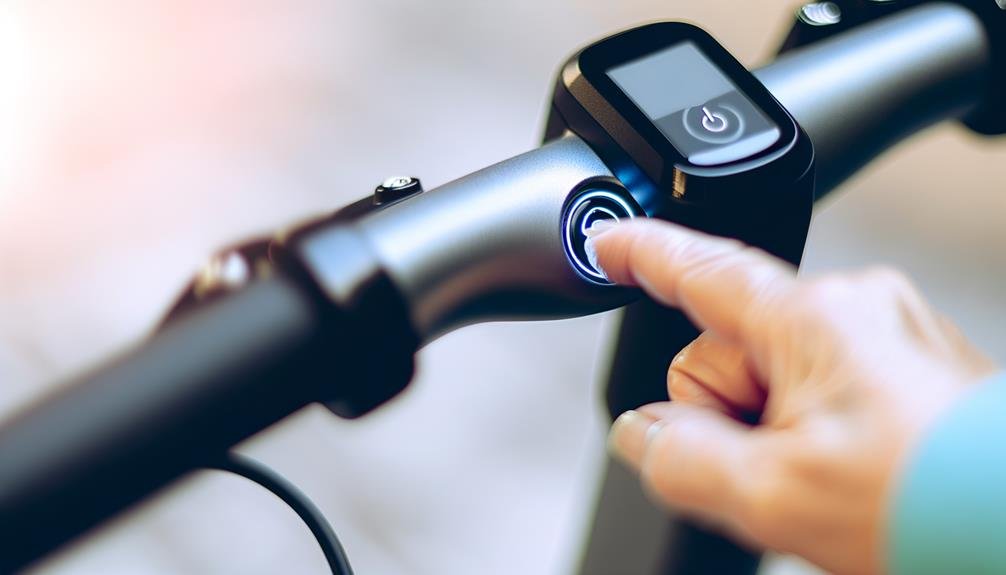Charles Miller is a veteran bike enthusiast with over 12 years of experience dealing with bikes as a mechanic. Despite immense love and expertise for...
Did you know that sales of electric bikes in the UK skyrocketed by almost 50% in 2020? This may have you wondering about the legality and guidelines surrounding their use within the country.
As a professional writer with an interest in sustainable travel, I've spent a considerable amount of time researching this topic. We'll explore the regulations, requirements, and benefits of using electric bikes in the UK, as well as a few potential challenges.
But first, let's delve into why these bikes have suddenly become so popular. Curious? Let's jump in.
- Key Takeaways
- Understanding Electric Bike Legislation
- E-bike Licensing, Tax, and Insurance
- UK's E-bike Road Regulations
- Electric Bikes Vs Traditional Bikes
- E-bike Safety Measures in the UK
- Benefits of Using E-bikes
- Challenges of E-bike Usage
- E-bike Throttle Rules
- The EAPC Classification
- Electric Bikes and the Environment
- Frequently Asked Questions
- Conclusion
Key Takeaways
- Electric bikes in the UK must meet Electrically Assisted Pedal Cycles (EAPC) requirements, including having pedals and displaying power output and battery voltage.
- E-bikes can be ridden on cycle paths and areas where regular pedal bikes are allowed if they meet EAPC rules.
- E-bikes meeting EAPC requirements do not require a license, registration, or insurance.
- Non-compliant e-bikes require registration, taxation, a driving license, and possibly a crash helmet.
Understanding Electric Bike Legislation
To understand the legislation around electric bikes in the UK, it's crucial to know about the Electrically Assisted Pedal Cycles (EAPC) requirements. These rules stipulate that e-bikes must have pedals for propulsion, display power output and battery voltage, and limit the motor power to 250 watts and the speed to 15.5mph.
As a rider, it's essential to know that if your electric bike meets these EAPC rules, you can ride it on cycle paths and areas where regular pedal bikes are allowed. However, if it doesn't meet these requirements, UK law classifies it as a motorcycle or moped.
Understanding electric bike legislation is key to ensuring you're riding legally and safely. If your bike can be propelled without pedaling or doesn't comply with EAPC rules, it requires type approval and must display an approval number plate. And if your bike exceeds the 15.5mph or 250w limit, UK law classifies it as a speed pedelec. This means you'll need government approval, registration, taxation, a driving license, and a mandatory crash helmet. You also won't be allowed on cycle lanes.
E-bike Licensing, Tax, and Insurance
Building on our grasp of electric bike legislation, let's now unravel the intricacies of licensing, tax, and insurance for e-bikes in the UK.
When purchasing an e-bike, the first thing to consider is whether you'll need a licence to ride. For e-bikes meeting the Electrically Assisted Pedal Cycle (EAPC) requirements, there's no need for a licence, registration, or insurance. They're seen as regular pedal bikes and can be ridden on roads and cycle paths freely.
However, it's a different story for speed pedelecs and e-bikes not meeting EAPC requirements. Classified as motorcycles or mopeds, they require registration, taxation, and a driving licence. Plus, you must don a crash helmet when riding.
E-bikes with throttles bought after 2016 must comply with EAPC rules, which include cutting off assistance at 3.7mph without pedalling. E-bikes not needing to meet specific requirements can be ridden on public or private property where standard bicycles are allowed, and the rider must be at least 14 years old.
UK's E-bike Road Regulations
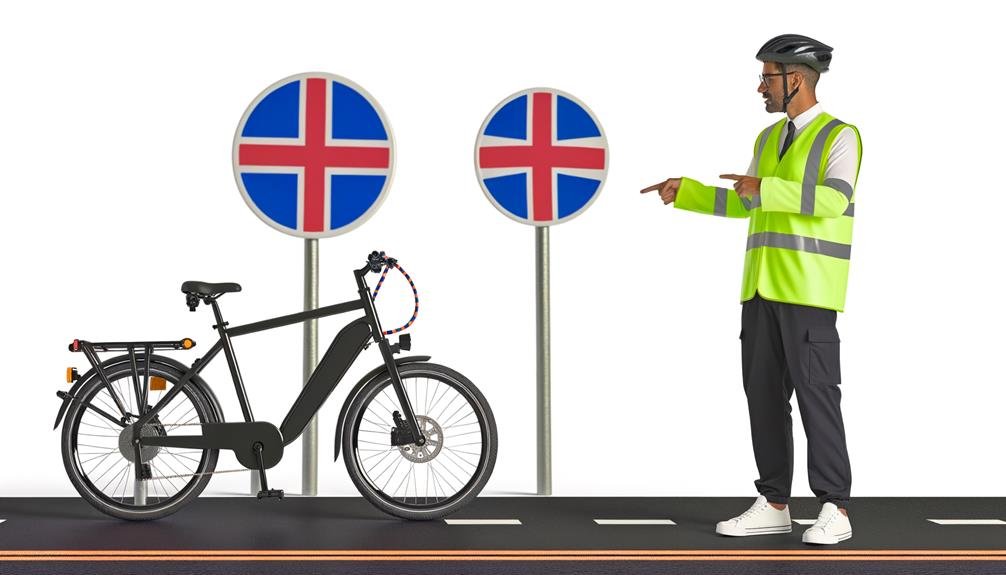
Let's now turn our attention to the road regulations for e-bikes in the UK. Understanding e-bike legislation is crucial for riders to ensure they're following the law and not incurring unnecessary penalties.
We'll also be considering the safety requirements to keep in mind when hitting the road with your electric bike.
Understanding E-bike Legislation
Navigating the UK's e-bike legislation can be a bit tricky, but it's essentially about understanding the EAPC requirements and where you are allowed to ride.
| EAPC Requirements | E-bikes in the UK |
|---|---|
| Pedals, power output display, and battery voltage | Must be present |
| Motor power | Should not exceed 250 watts |
| Speed limit | Cannot propel the bike beyond 15.5mph |
| Use on UK roads | Allowed on cycle paths and anywhere regular bikes are |
| License, registration, insurance | Not required if EAPC compliant |
Other types of electric bikes not meeting these conditions are classified as motorcycles or mopeds, requiring additional regulations. Understanding e-bike legislation is key to getting the most out of your electric bike experience in the UK.
Safety Requirements for E-bikes
Now that we've unpacked the complexities of e-bike legislation, let's turn our attention to the equally important safety requirements and road regulations for e-bikes in the UK.
For us to confidently navigate the UK roads with our electric bikes, we must adhere to a few key rules – making our electric bikes legal and safe.
- EAPC Requirements: Our e-bikes must have pedals, display power output and battery voltage, and shouldn't exceed a power output of 250 watts or speed of 15.5mph.
- Riding Locations: We're allowed to ride our e-bikes on cycle paths and any place regular bikes are permitted.
- Crash Helmet: For non-compliant e-bikes, classified as mopeds or motorcycles, we must wear a crash helmet, register and tax our e-bikes, and possess a driving license.
Electric Bikes Vs Traditional Bikes
While both electric and traditional bikes have their merits, the key differences between them often lie in their respective UK regulations, power outputs, and speed limitations.
For instance, electric bikes must meet specific EAPC requirements, such as having a maximum power output of 250 watts. If they don't, they're treated as mopeds or motorcycles, which means you'll need to register and tax them, and you may also need a driving license.
In contrast, traditional bicycles don't have these regulations. They're simpler to use and don't have power or speed restrictions. However, electric bikes can provide a significant boost to your pedaling, making cycling less strenuous, especially uphill or on long journeys.
There's also the matter of speed. Electric bikes bought after 2016 in the UK can assist riders without pedaling up to a speed of 3.7 mph. But if you want to ride faster than 15.5 mph or with a power output exceeding 250w, you'll need to get a speed pedelec. These are classed as motorcycles or mopeds, and they require additional UK government approval, registration, taxation, and perhaps a driving license.
E-bike Safety Measures in the UK
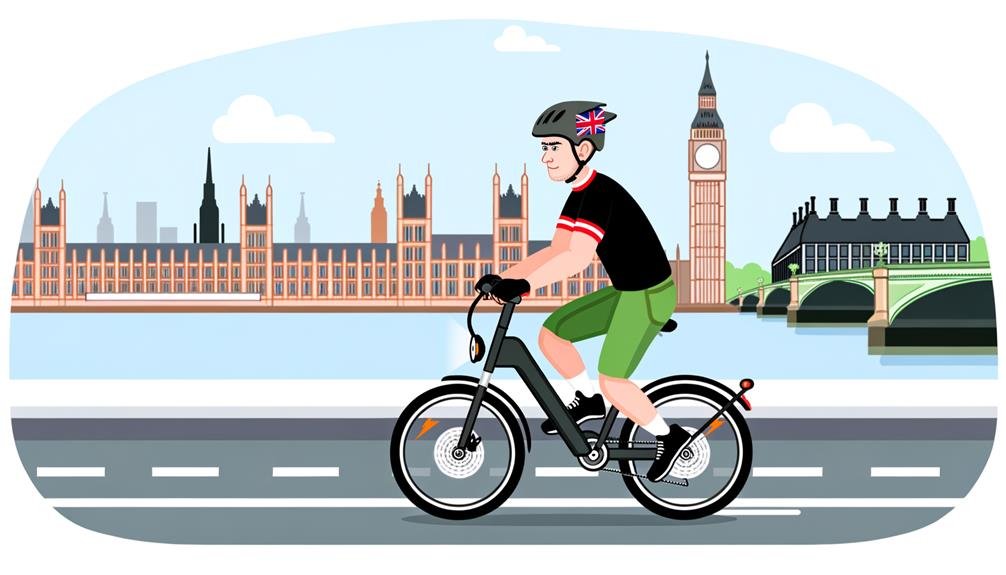
Shifting gears from the distinctions and regulations between traditional and electric bikes, let's focus on the crucial safety measures for e-bike riders in the UK. These e-bike safety measures in the UK not only ensure your well-being but also the safety of others sharing the roads and paths with you.
- Helmet – While it's not legally required for e-bike riders to wear a helmet, it's highly recommended. Protecting your head from potential impacts should be a top priority.
- EAPC Regulations – Ensure your ebike meets the Electrically Assisted Pedal Cycles (EAPC) standards. This includes a power output of no more than 250 watts and a maximum speed of 15.5mph. An approved e-bike grants you the freedom to ride on cycle paths and anywhere pedal bikes are allowed.
- Road Rules – Brush up on your Highway Code. It's the responsibility of every rider to know and follow these rules, ensuring safety for all road users.
Benefits of Using E-bikes
Let's chat about the benefits of using e-bikes, especially in the context of the UK.
From a health perspective, e-biking can really ramp up our physical activity levels and boost overall fitness.
Additionally, as an eco-friendly mode of transport, e-bikes are taking us one pedal closer to a sustainable future.
Health Impacts of E-biking
Not only are e-bikes a greener transport option, but they also offer significant health benefits for riders. The health impacts of e-biking aren't to be understated.
- Riding electric bikes promotes active travel. It's a fun and effortless way to integrate exercise into your daily routine.
- E-bikes can boost cardiovascular health. They get your heart rate up, improving circulation and lung capacity.
- For those into outdoor activities, an electric mountain bike provides a full-body workout, enhancing muscle strength and flexibility.
E-bikes: Eco-friendly Transport
In the realm of eco-friendly transport, e-bikes are making a significant impact, especially in the UK where they're not just beneficial for the environment, but also fully supported by government regulations.
When you use electric bikes in the UK, you're actively contributing to a greener, cleaner world. Known as e-bikes, these electrically powered bicycles help cut back on carbon emissions and reduce traffic congestion.
The joy of riding a new electric bike goes beyond the personal level. It's about being part of a collective move towards eco-friendly transport. Even as you zip through scenic routes or tackle daily commutes, you're riding for a cause – a better, healthier planet.
Challenges of E-bike Usage
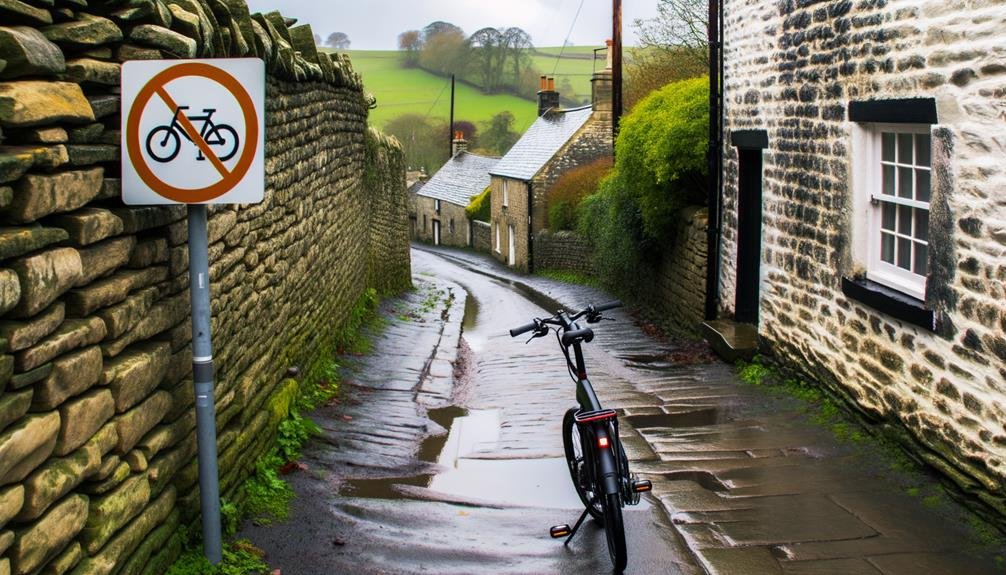
Despite their growing popularity, navigating the legal landscape of electric bikes presents a significant challenge for users in the UK. The question, 'Can you use electric bikes in the UK?' isn't as straightforward as you might think. As an e-bike enthusiast, I've experienced these challenges of e-bike usage firsthand.
Here are three key challenges:
- Understanding the Laws: Different types of e-bikes follow different rules. Some need to meet the EAPC requirements – not exceeding 15.5mph or 250w. Any faster or more powerful, they're considered motorcycles, requiring tax, registration, and a driving license.
- Using E-bikes on Cycle Paths: I've found that using them on cycle paths can be tricky. Certain cities, like Coventry, have restricted e-bikes in some areas due to misuse.
- Throttle Regulations: Throttles on e-bikes have specific laws. Understanding these is crucial to avoid legal issues.
Being part of the e-bike community means understanding and following these regulations for our safety and to promote greener transport. Let's navigate these challenges together and make the UK a safe and welcoming place for e-bikes.
E-bike Throttle Rules
What's the deal with throttles on e-bikes, you might ask? Let's dive into the world of e-bike throttle rules in the UK.
Throttle-controlled electric bikes, or e-bikes, are a fascinating innovation, but they're not without guidelines. To comply with EAPC legislation, throttles on e-bikes purchased after 2016 should assist the rider up to a speed of 3.7 mph without pedaling. Any speed above that, and you should be pedaling, folks!
Now, if you're not pedaling, your e-bike's throttle should cut off at 3.7 mph. This is an essential rule to ensure safety and compliance with UK regulations. A prime example of a bike that follows these rules is the Mirider One, a road-legal e-bike with throttle control.
However, remember, each location in the UK might have its own rules too. Take Coventry, for instance, where they've banned electric bikes in certain areas due to reckless riding.
The EAPC Classification
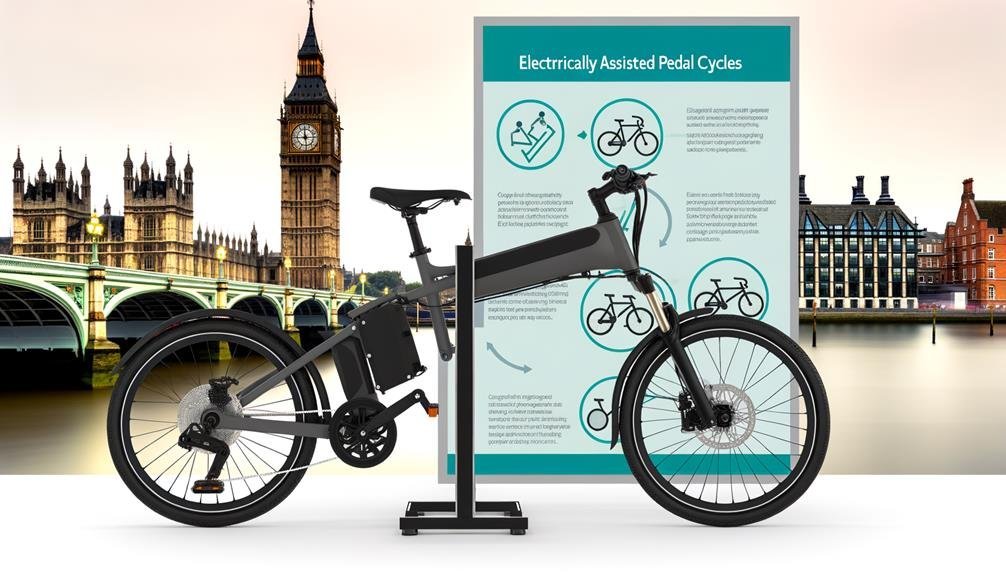
Now, let's get down to the nitty-gritty of the EAPC classification for electric bikes in the UK. As a fellow enthusiast, it's important to understand what defines an EAPC, or an 'electrically assisted pedal cycle'.
- The EAPC requirements state that electric bikes in the UK must have pedals that can be used to propel it, display motor and battery information, and have a maximum power output of 250 watts with a top speed of 15.5 mph.
- EAPC-compliant bikes can be used pretty much anywhere regular bikes are allowed, including cycle paths and other public spaces. So, you're part of the cycling crowd, not stuck on the roads with the motorbikes.
- However, if your electric bike doesn't meet the EAPC rules, it's classed as a moped or motorcycle. This means you'll need registration, a driving license, and even a crash helmet.
To summarise, the EAPC classification allows us to use electric bikes almost as we'd regular bikes, provided we stick to the rules. It's pretty straightforward and keeps us all in the loop and on the right path.
Electric Bikes and the Environment
Let's now consider the environmental impact of e-bikes.
We'll look at their carbon footprint, compare them to traditional bikes, and explore the benefits they offer.
This will shed light on how e-bikes could potentially shape a greener future.
E-Bikes' Carbon Footprint
E-bikes, with their significantly smaller carbon footprint compared to traditional vehicles, are revolutionising the way we think about green transportation in the UK. As a part of the green movement, we're seeing an increase in the adoption of e-bikes. They're not just a novel concept – they're a practical solution for sustainable commuting.
Here's why e-bikes are a game-changer:
- E-bikes produce zero emissions, drastically reducing air pollution.
- They alleviate urban congestion, making our cities cleaner and healthier.
- They're an eco-friendly alternative for short commutes, promoting sustainable travel.
E-Bikes Vs Traditional Bikes
While we've established the environmental benefits of e-bikes, it's also crucial to compare them with traditional pedal bikes to gain a comprehensive view of their impact on the environment.
With an electric motor to assist, e-bikes, or speed pedelecs, provide a less strenuous and more efficient ride, especially for longer distances or uphill stretches. Yet, they must meet EAPC requirements to ensure they maintain a balance between power and user control.
Notably, they're more energy-efficient than cars and motorcycles, yet do require electrical energy, unlike traditional bikes. Still, the benefits like reduced emissions and less congestion on the roads make e-bikes a greener choice.
Benefits of E-Bikes
Switching to e-bikes can significantly contribute to a cleaner environment, as they not only offer a greener transportation alternative but also help alleviate the issue of urban congestion. The benefits of e-bikes are numerous.
Here are three standout advantages:
- Efficiency: E-bikes allow you to pedal with assistance, making longer distances manageable and less strenuous.
- Eco-friendly: With their maximum power output limited to conserve energy, e-bikes are a sustainable choice. They emit less pollution compared to cars or motorcycles.
- Practicality: You can use electric bikes in the UK just like traditional cycles on roads, making them a handy and legal commuting option.
Embrace the e-bike revolution! It's an inclusive, efficient, and eco-friendly movement that welcomes everyone.
Frequently Asked Questions
Can You Ride an Electric Bike on the Road in the Uk?
Yes, you can ride an electric bike on UK roads. As long as it meets EAPC rules, it's treated like a regular bike. If it doesn't, it's classified as a moped or motorcycle.
Why Are Electric Scooters Illegal in UK but Not Electric Bikes?
Electric scooters aren't pedal-powered, which disqualifies them from the Electrically Assisted Pedal Cycle requirements. Unlike e-bikes, they're classed as motor vehicles, needing license and registration. It's a bummer, but that's the law here.
Can You Do Ride London on an Electric Bike?
Yes, I can participate in Ride London on an electric bike, as long as it meets the Electrically Assisted Pedal Cycle requirements. It's a fantastic way to be part of the event and feel included.
What Is the Speed Limit on Electric Bikes in the Uk?
Sure, I can clarify that for you. In the UK, the speed limit for electric bikes is set at 15.5mph. Beyond this speed, the bike's motor is not permitted to continue propelling the bike.
Conclusion
So, can you use e-bikes in the UK? Absolutely, but with a few caveats. They need to meet EAPC rules, or else you're veering into moped territory.
Always remember, safety first! And while they're a great eco-friendly option, there are still challenges to navigate. But hey, isn't that part of the fun?
Stay tuned as we delve further into the world of e-bikes. Will they redefine our commute? Only time will tell…

Charles Miller is a veteran bike enthusiast with over 12 years of experience dealing with bikes as a mechanic. Despite immense love and expertise for his Tacoma, he rides his Trek Ebike more. Anytime you meet him, you’ll either hear him talking about Bikes, or writing about all things bikes and cars on this blog.
More Posts


